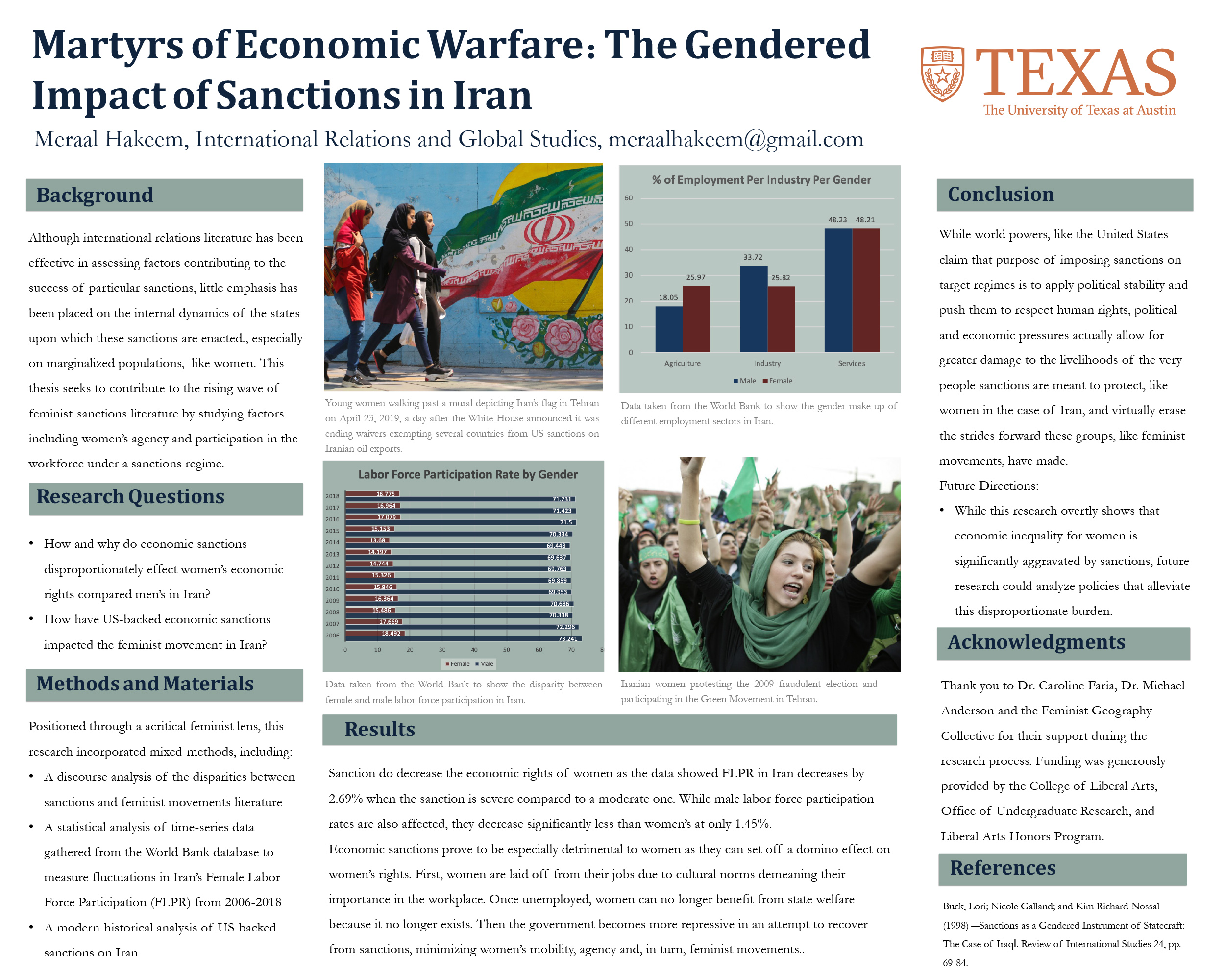Meraal Hakeem
While it has been widely accepted that strides towards advancing women’s rights is directly correlated to increased economic prosperity, good governance, and social equality on a global scale, there has been limited to no research on the gendered implications of foreign policy economic tools, specifically economic sanctions. The central question this research proposes is in what ways do women suffer disproportionately more than other populations under sanctions implemented under the same regimes, specifically in Iran? By examining sanctions through a gendered perspective and drawing conclusions from feminist International Relations literature, this thesis examines the case of US-backed sanctions against Iran, unraveling the deeply gendered impacts of sanctions, ranging from differential wealth deprivations to an increase of obstacles facing women’s movements. This investigation studies women in Iran as the nation grows increasingly relevant in the international political economy and international relations today with heightened US-Iranian tensions and the economic sanctions placed on Iran by the United States by bringing together quantitative and qualitative data to illustrate a more holistic narrative on the effects of economic sanctions on women. Through resources like the World Bank’s Middle East and North Africa Gender Innovation Lab and the ILOSTAT database, this research also quantitatively analyzes data on women’s well-being, through surveying factors, including and gender gaps in jobs, asset ownership, and agency as it relates to economic opportunities. Overall, this thesis fills in the gaps in the literature on economic sanctions and critical development studies by incorporating the effects of women’s well-being and financial development, specifically in Iran, into the sanctions conversation and suggests how the implantation of “safe sanctions” and support for feminist movements can work to alleviate the burdens economic sanctions place on women in society.

Comments
Great poster. The color scheme between the content, photographs and figures work very well! It is interesting to graphically view the ratio between male and female under agriculture being high, how it is almost equal and then drastically decreasing in terms of industry. – Hannah S Saji
Wonderful poster and project. Do you have any hypotheses about possible policies that could alleviate the burden on women? – Jeanette Herman
The design of this poster turned out great! Between the photos, the figures, and the text, you communicated your work very effectively. – Rob Reichle
Thank you! – Meraal Hakeem

